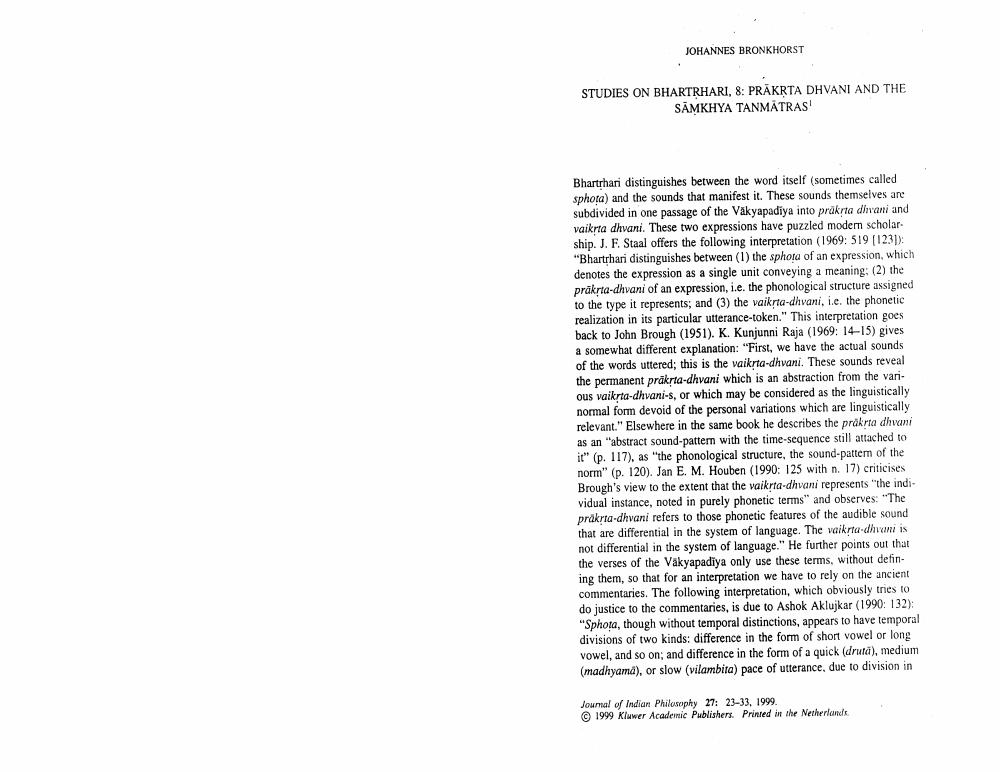Book Title: Studies On Bhartahari And Prakrta Dhvani And Samkhya Tanmatras Author(s): Johannes Bronkhorst Publisher: Johannes Bronkhorst View full book textPage 1
________________ JOHANNES BRONKHORST STUDIES ON BHARTRHARI, 8: PRÄKRTA DHVANI AND THE SAMKHYA TANMÄTRAS' Bhartrhari distinguishes between the word itself (sometimes called sphota) and the sounds that manifest it. These sounds themselves are subdivided in one passage of the Vakyapadiya into präkṛta divani and vaikṛta dhvani. These two expressions have puzzled modern scholarship. J. F. Staal offers the following interpretation (1969: 519 [123]): "Bhartrhari distinguishes between (1) the sphota of an expression, which denotes the expression as a single unit conveying a meaning; (2) the prakṛta-dhvani of an expression, i.e. the phonological structure assigned to the type it represents; and (3) the vaikṛta-dhvani, i.e. the phonetic realization in its particular utterance-token." This interpretation goes back to John Brough (1951). K. Kunjunni Raja (1969: 14-15) gives a somewhat different explanation: "First, we have the actual sounds of the words uttered; this is the vaikṛta-dhvani. These sounds reveal the permanent prakṛta-dhvani which is an abstraction from the various vaikṛta-dhvani-s, or which may be considered as the linguistically normal form devoid of the personal variations which are linguistically relevant." Elsewhere in the same book he describes the präkṛta dhvani as an "abstract sound-pattern with the time-sequence still attached to it" (p. 117), as "the phonological structure, the sound-pattern of the norm" (p. 120). Jan E. M. Houben (1990: 125 with n. 17) criticises Brough's view to the extent that the vaikṛta-dhvani represents "the individual instance, noted in purely phonetic terms" and observes: "The pråkṛta-dhvani refers to those phonetic features of the audible sound that are differential in the system of language. The vaikṛta-dhvani is not differential in the system of language." He further points out that the verses of the Vakyapadiya only use these terms, without defining them, so that for an interpretation we have to rely on the ancient commentaries. The following interpretation, which obviously tries to do justice to the commentaries, is due to Ashok Aklujkar (1990: 132): "Sphota, though without temporal distinctions, appears to have temporal divisions of two kinds: difference in the form of short vowel or long vowel, and so on; and difference in the form of a quick (drută), medium (madhyama), or slow (vilambita) pace of utterance, due to division in Journal of Indian Philosophy 27: 23-33, 1999. 1999 Kluwer Academic Publishers. Printed in the NetherlandsPage Navigation
1 2 3 4 5 6
